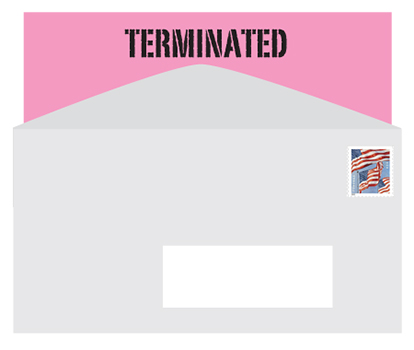 Have you ever fired a client? No, you didn’t hear that
incorrectly. I did not say have you fired an employee or have you had a client
who left you. Have you ever fired a client
– a customer who was not a fit for your company and you decided to break up the
relationship rather than try to gain more business from them? If so (or if you
wish you could, but have not yet), there are marketing lessons to be learned in
this process.
Have you ever fired a client? No, you didn’t hear that
incorrectly. I did not say have you fired an employee or have you had a client
who left you. Have you ever fired a client
– a customer who was not a fit for your company and you decided to break up the
relationship rather than try to gain more business from them? If so (or if you
wish you could, but have not yet), there are marketing lessons to be learned in
this process.
Why might you get rid of a customer? The obvious answer is
they cost you more than you can make in revenue from them. Some people demand
more service, products, pampering and time than you can recoup in what they pay
you. Some people will play around with ideas of buying something from you –
demanding quote after quote, but never getting around to purchasing anything
from you. Some people are never satisfied with what you produce, demanding that
you continually fix their problems without any thought of paying you extra for
the effort. Some people continually try to talk you down on price, even if
you’ve given them a fair quote. That’s not to say that normal customers can ask
for the same thing, but the difference is you can make a profit on normal
customers. Those that you want to get rid of are those that drain the margins
out of every deal you make with them.
So what does that have to do with marketing? One of the
key aspects of marketing strategy is to define what is a bad customer, what is
a good customer and what is a great customer. We tell our clients to focus
their marketing on the list of great customers. They are the group that should
make up your primary target markets. This type of focused marketing to a
specific group of people will help you avoid the firing of customers down the
line.
What if everyone is my customer? I often get that line
from business leaders. I would challenge your thinking if that is what you
believe. Are children your target market? Are senior citizens your target
market? Are Europeans or Chileans or backpackers or tattoo enthusiasts? Unless
you are marketing some kind of necessity (like clean drinking water), everyone
is not in your target market. Do a little thinking and decide who needs what
you produce. Define them even closer than this – who is likely to buy what I
produce to solve their problem? This is your target market. Market to them. All
the rest are not great fits. Fire them or, better yet, don’t waste your time
and money marketing to them in the first place.